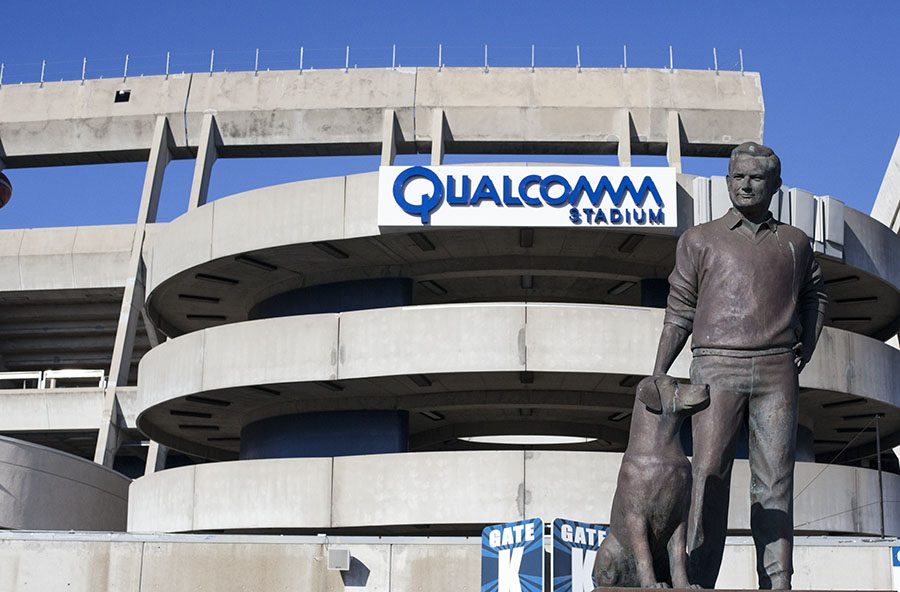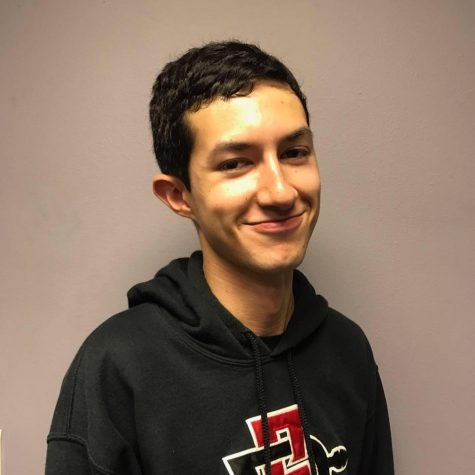Since the San Diego Chargers recently announced its intention to leave San Diego, the remaining Qualcomm Stadium site is ripe for a number of potential uses, including as a satellite campus for San Diego State.
The Chargers announced on Jan. 12 they would be leaving San Diego for Stan Kroenke’s Inglewood stadium. SDSU President Elliot Hirshman has apparently already been in talks with the City of San Diego, which owns the stadium, regarding possible redevelopment of the site.
“We are excited about the opportunity to continue discussions with our partners, including Mayor Faulconer, the City Council and our community, about the potential to redevelop the Qualcomm Stadium site,” Hirshman said in a statement Thursday after the Chargers’ announcement. He also expressed his sympathies for Chargers fans in San Diego.
“While the discussions for the site are in the early stages, we have an opportunity to create something very special for our community,” he said.
SDSU spokesman Greg Block said a blog post of Hirshman’s from nearly a year ago represents the best explanation of Hirshman’s vision for the site.
In the blog post, dated April 5, 2016 when the Chargers were still pursuing a downtown stadium option, Hirshman said the current SDSU campus does not have sufficient space to serve the university over the next 50 years.
“We see a future in Mission Valley with community parks and recreational opportunities, low- to medium-density housing, a small number of research/technology transfer facilities and, possibly, a stadium – one on a significantly smaller scale than Qualcomm Stadium – that could be shared by San Diego State, a Major League Soccer franchise and other community partners,” the blog post reads.
One exciting aspect of this proposal, Hirshman wrote, is the existing trolley connection between the SDSU main campus and the Qualcomm site.
Students and faculty residing at the new campus could use public transportation to get to the main campus, potentially reducing traffic in Mission Valley and the College area, he wrote.
However, Hirshman did say there are some unanswered questions about redevelopment in the post.
“Who would own the redeveloped site? Who would be the development partners? How would the redevelopment be financed? The blunt answer to these questions at this moment is that we don’t know,” he wrote.
These questions remain unanswered in 2017.
Hirshman’s blog post came from an idea from JMI Realty that demonstrated how San Diego State might expand into the Mission Valley site circulated publicly.
The idea, which Hirshman later said he was not specifically endorsing, featured student and faculty housing, academic structures, offices, two parking structures, an amphitheater and a smaller, 40,000-seat football stadium.
According to the San Diego Union-Tribune, the plan was presented at a briefing sponsored by SDSU’s Corky McMillin Center for Real Estate, where the presenters suggested donating the Qualcomm site to San Diego State or UC, San Diego. Whichever institution received the land would then be ultimately responsible for planning the project.
“The current Qualcomm site is an empty canvas of 166 acres that is filled with potential,” read a statement from the office of San Diego City Councilmember Scott Sherman, who represents the area in which Qualcomm Stadium is located.
“In the coming months, our office is looking forward to hearing ideas and speaking with all parties on how to best utilize this site. San Diego State will be an important part of that conversation.”
Jeff Powell, Sherman’s communications director, said Sherman would be supportive of using the Qualcomm site as a new stadium for the Aztecs, and possibly also as a Major League Soccer Stadium or new parkland along the San Diego River.
However, Powell said he believes Sherman would not support outright giving any of the land to San Diego State without any compensation.
“Obviously, San Diego State is important to that site. We want them to be a part of it, but I believe the councilmember doesn’t think it would be the best use of taxpayer funds just to give it away,” he said.
Neither UC San Diego nor a representative of Mayor Kevin Faulconer responded to a request from The Daily Aztec for comment on the matter.













